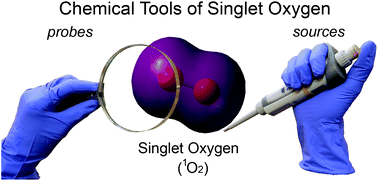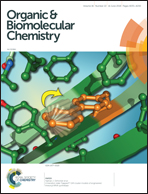Chemical tools for the generation and detection of singlet oxygen
Abstract
Growing evidence indicates intermediacy of singlet dioxygen (1O2) in a variety of pathophysiological processes. 1O2 has also found great utility of destructive actions for clinical and environmental applications. However, many details of the molecular mechanisms mediated by 1O2 remain insufficiently understood. Efforts to elucidate the 1O2 chemistry have been hampered by the lack of chemical tools capable of generation and detection of 1O2. In this review, I summarize the recent advances in the development of the chemical tools of 1O2. This article focuses on two topics. The first part introduces chemical methods for ground-state generation of 1O2. Designs of the molecular carriers of 1O2 are also explained. The second part discloses molecular probes of 1O2. The probes are categorized into three groups, depending on signaling modalities: absorption-based probes, photoluminescent probes, and chemiluminescent probes. Focus is on the molecular design to maximize the signaling actions. Disadvantages of using the probes are also discussed to motivate the future research. I hope that this review will serve as helpful guidance to the exploitation and development of the chemical tools of 1O2.



 Please wait while we load your content...
Please wait while we load your content...